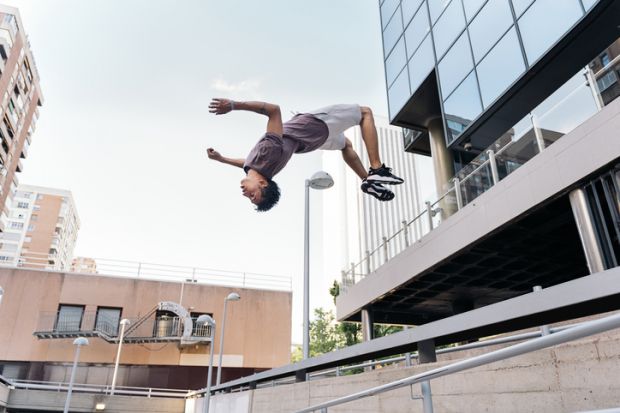Star jumps, lunges, using a backpack for overhead presses; it may not sound like most people’s idea of a break but a researcher has found that stopping a lecture so students can do some quick exercise can help stop them yawning their way through classes.
Scott Hayes, associate professor of psychology at The Ohio State University, admitted that when he first suggested to his students that they get up and move around, there were “varied” reactions.
“I tend to see smiles and laughing, and a few expressions like, ‘Is this guy serious?’” he told Times Higher Education.
“And in the beginning of the semester, there is a bit of awkwardness as they get used to the idea, but that also comes with some fun. They do seem to enjoy it, and I do too.”
Campus podcast: human connection and the student experience
Dr Hayes said previous research by Barbara Fenesi, assistant professor in education at Western University, found exercise breaks were effective for students when watching online lectures and he wanted to see whether it would be the same for students attending in-person.
“Anybody who has taught has had students with some glazed looks in their eyes, yawning, or maybe even sleeping, and that can be a bit discouraging compared to when students are actively engaged,” he said.
“I thought that if exercise breaks can work for a single videotaped lecture in a controlled study, maybe it would be helpful during live lectures for the duration of the semester.”
Dr Hayes asked his students to design their own exercise routines of five minutes each, which were run once or twice during an 80-minute lecture across the whole semester in four upper-level psychology courses.
Students said the exercise breaks improved attention, increased course enjoyment, and helped them engage more with their peers, according to survey results published in the journal Frontiers in Sports and Active Living.
Dr Hayes, who has continued including breaks in his classes after the study’s conclusion, suggested exercise breaks could be included in any number of campus settings, including “walking meetings”.
“Many of us are faced with barriers to implementing exercise routine or exercise breaks in our daily lives,” he said.
“I certainly was a bit apprehensive when I first implemented the exercise breaks, but once you get through that first week, I think the anxiety for the professor and the students decreases and it goes quite well.”






